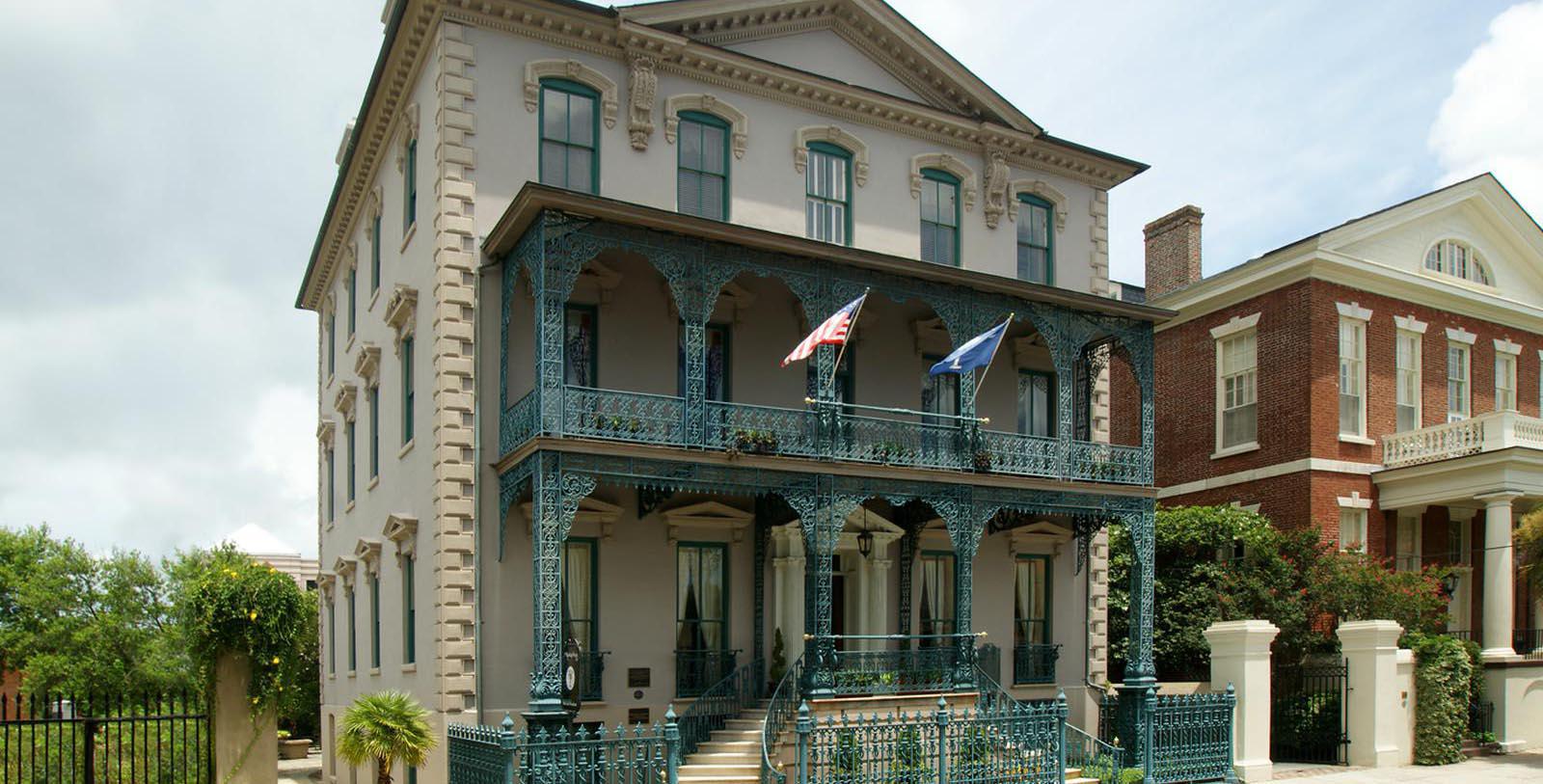Receive for Free - Discover & Explore eNewsletter monthly with advance notice of special offers, packages, and insider savings from 10% - 30% off Best Available Rates at selected hotels.
experience
-
Experience the postcard-perfect streets of Charleston from the charming vantage point of a horse-drawn carriage ride operated by Old South Carriage Co. or Palmetto Carriage Works. With its cobblestone streets, confection-colored buildings, waving palms, and stately trees dripping with Spanish moss, Charleston can only be described as breathtakingly picturesque. Under the well-trained hands of expert tour guides, guests take in sights like Rainbow Row, Cabbage Row, the Aiken-Rhett House, Charleston City Market, White Point Gardens, Colonial Lake, and Waterfront Park. Guests can also rest easy knowing that the horses are well taken care of, with spacious, well-ventilated box stalls, plenty of quality food, and even pasture time at farms in the countryside. Visitors are welcome to visit equine team members at their stables in the city to witness their care firsthand.
-
Uncover the contributions, both past and present, of Black Charlestonians by exploring local landmarks along the Gullah Geechee Cultural Heritage Corridor. The Gullah Geechee people are the descendants of enslaved individuals from Central and West Africa, who retain both rich cultural and linguistic traditions with African roots. (Although often used interchangeably, “Gullah” more specifically refers to descendants in North and South Carolina, while “Geechee” is used for those in Georgia and Florida.) Spanning 12,000 square miles, from southern North Carolina to northern Florida, this coastal region is recognized by the U.S. Congress for its cultural and historical importance. Due to their geographic isolation on the Sea Islands in the Atlantic, both during slavery and following Emancipation, the early Gullah people had fewer interactions with Colonial culture. This allowed the Gullah language, sometimes called “Sea Island Creole,” and Central and West African traditions like handicrafts, farming and fishing practices, cooking techniques, folk beliefs, music, and storytelling to flourish. Today, however, due to climate change and real estate development, Gullah Geechee homelands and their way of life are at risk, landing the region on the National Trust for Historic Preservation’s list of most threatened places. Visitors to Charleston can help keep the city’s colorful Gullah culture alive in a number of ways, like embarking on the “Exploring the Gullah Culture” tour at Boone Hall, touring the Sea Islands of James and Johns and other Gullah landmarks, enjoying the Gospel Brunch on Sundays at Halls Chophouse, or taking in a performance of “The Sound of Charleston” concert series.
-
Search for a souvenir at the Charleston City Market. A city mainstay since 1804, following its transfer to the city in 1788 by Charles Cotesworth Pinckney for permanent use as a public market, this sprawling marketplace stretches for four city blocks from Meeting Street to the Cooper River. Today the market is home to over 300 entrepreneurs. Shoppers can explore both the circa-1841, Greek Revival-style Market Hall and three “sheds,” open-air structures that have stood the test of time, weathering earthquakes, tornadoes, and Civil War cannon bombardments. When searching for that special something, keep an eye out for the “Certified Authentic: Handmade in Charleston” symbol to take home a local product. One such good, the sweetgrass basket, is rich in Charleston history with roots in African culture. Woven by Gullah artisans out of bulrush, locally harvested from the sandy soil of the Lowcountry, these stunning handicrafts were once used to the rice seed from its chaff. The history and craftsmanship of sweetgrass basketry is so prized that one by Charleston weaver Mary Jackson even resides in the permanent collection of the Smithsonian American Art Museum.
-
Revel in Charleston’s role as an early jazz incubator. Although jazz music was born in New Orleans, the product of the mingling of African and Creole cultures, the style was further finessed in other areas like New York City’s Harlem, the South Side of Chicago, and Beale Street in Memphis. In Charleston, the jazz scene, much like many other aspects of the city’s culture, took significant inspiration from the Gullah community. Here, the tribal rhythms brought over by enslaved African drummers combined with the beats of Black drummers attached to white militias and community brass bands to create Charleston jazz. In fact, the workday tunes and Geechee dances of Charleston’s dock workers eventually inspired the creation of “The Charleston” by Cecil Mack and James P. Johnson. The accompanying dance craze of the Roaring 20s also had African roots, descending from the Juba dance introduced to South Carolina by enslaved people from the Kingdom of Kongo. Today, jazz lovers in Charleston can enjoy this uniquely American music style at places like the yearly Charleston Jazz Festival, the Charleston Jazz Academy, and the Forte Jazz Lounge, as well as during performances by the Charleston Jazz Orchestra at the Charleston Music Hall.































